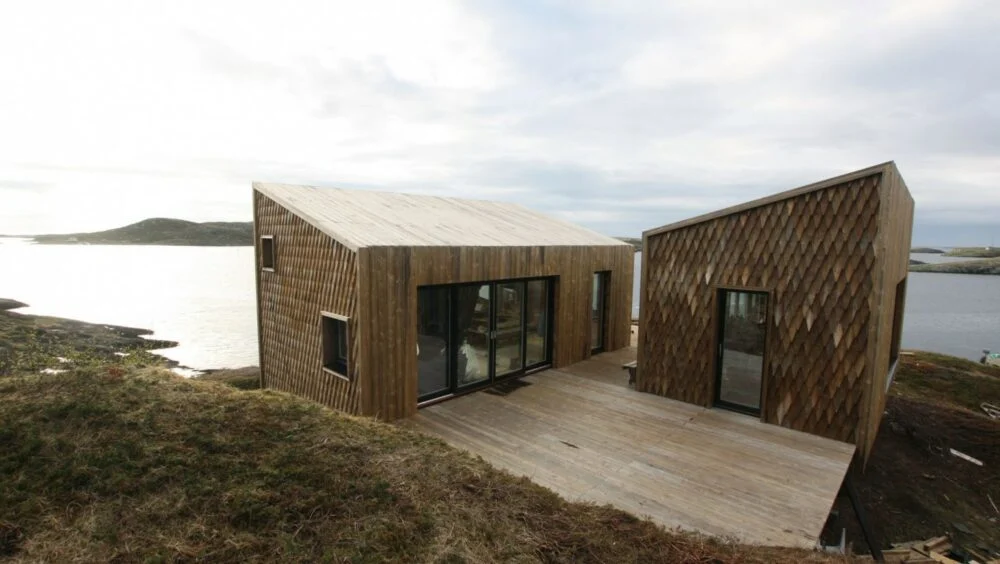1. Open Rainscreen
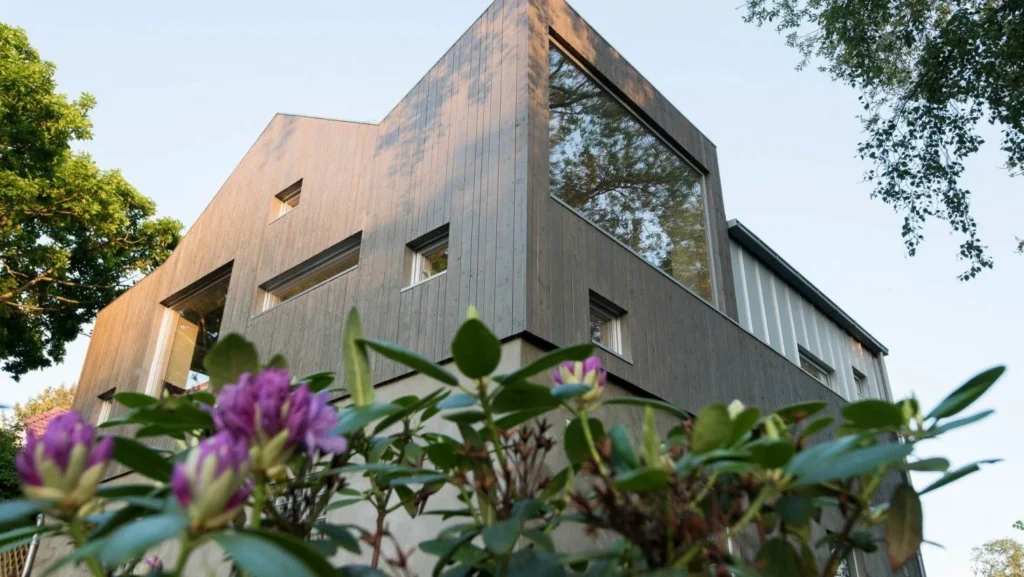
Insulation is important for keeping a building’s temperature comfortable. You can improve this by using smart wall designs that help with passive heating and cooling. One good method is an open rainscreen, which allows air to flow through the siding. This setup removes stale air and moisture from the waterproof layer, stopping hot or cold outside air from getting into the insulation. A modern library renovation uses Kebony wood siding to make this work. Kebony is strong and looks nice, making it a great choice for both sustainability and style. By using these wall systems, buildings can be more energy-efficient and comfortable inside. These methods help create a better indoor space while being kind to the environment.
2. Natural Siding Materials

This villa is located in a peaceful valley in Lithuania and is designed to be eco-friendly. Its shape and size fit well with the natural surroundings. The architects chose materials that are low in carbon emissions. Using natural materials for the siding, roof, and deck helps reduce the impact of construction. For this villa, most of the outside surfaces are covered with Kebony wood, which is sourced and made sustainably. This choice helps the villa blend in with the trees and protects the environment around it.
3. Renewable, Hydraulic Energy Production
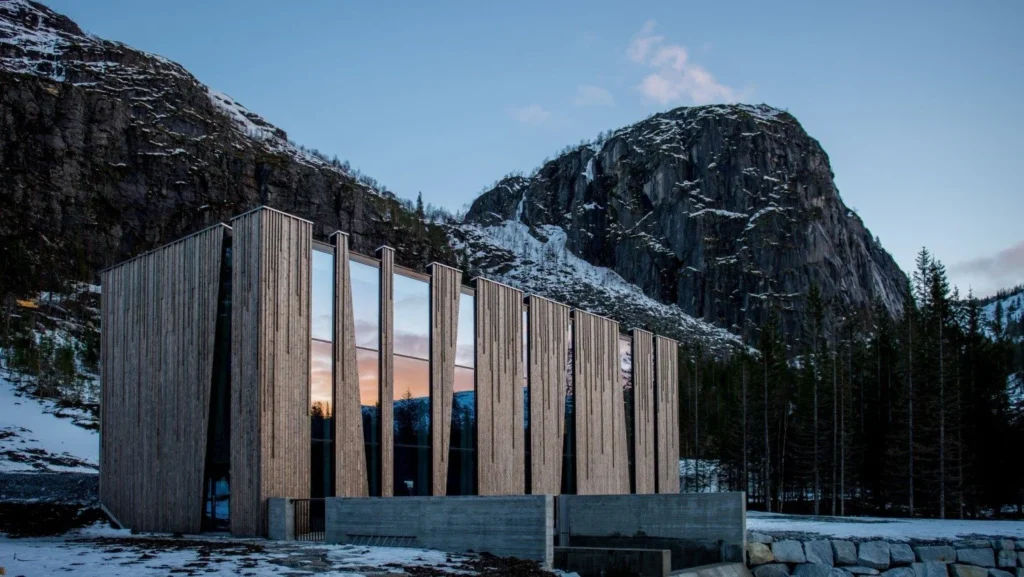
This hydraulic power plant in Norway shows that technical projects can also be beautiful. It demonstrates how we can collect renewable energy in a modern way. The building’s design and strong materials match the calm landscape around it. This helps people understand the need to move away from oil dependency. The Kebony wood siding will slowly turn silver over time, reflecting the changing beauty of nature. The plant not only serves a useful purpose but also improves the environment nearby. Overall, it’s a great example of combining technology with art. This project shows that being sustainable can look good, too.
4. Rooftop Decks and Terraces
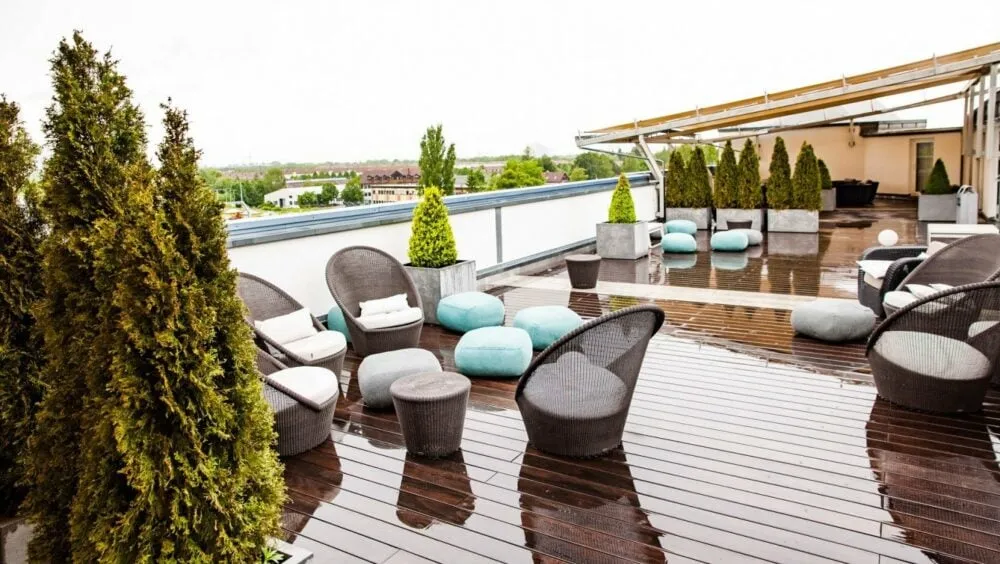
The rooftop is perhaps the most underutilized space in building design. It is often an afterthought – something to shed rain and house mechanical equipment. However, there is valuable square footage atop a building that can not only be used for functional space, but to help cut down on energy consumption. Building a flat roof allows for usable deck gathering space and also areas for green roofs and trees to be planted. Adding greenery to your roof reduces the impact of direct sunlight and keeps your building cool, cutting down on the run-time of active cooling systems.
5. Low-Maintenance Exterior Siding

Sustainability means durability. The most eco-friendly thing you can do when designing a building is making sure it stands up for the next 100 years. This reduces waste and energy costs over the course of a few decades and has the potential to make a huge long-term impact on global ecology. Using low-maintenance, long-lasting siding products, like the Kebony shiplap siding used in this student housing project, helps ensure a long life for the structure.
6. Use Eco-Friendly Design to Inspire

The best way to spread the eco-friendly love is to make it approachable. Sometimes taking these things too seriously has a way of turning people away who aren’t looking to face some of the hard truths about the health of our planet. This project by Get Living London does exactly that – it uses design to poke fun at itself and also brings communities together and talking about the importance of healthy living. Healthy living translates to a healthy planet by being aware of the environments we inhabit.
7. Small Spaces, Big Ideas

One of the best ways to lower the carbon footprint of your home is to lower the physical footprint of your home. This artist retreat in Northern Norway is a perfect example of tiny living that doesn’t sacrifice high design and inherent functionality. It is situated atop a raised dock that peeks over a waterway that swims past below. The unique shingle siding by Kebony provides the perfect compliment to crashing waves and serene mountain views.
8. Efficient, LED Lighting

Here’s a simpler version:
Keeping your interiors bright and functional is important for any building. But using too much artificial light can raise your electricity bill and harm the environment. The Waldorf School in Fredrikstad, Norway, uses LED lights effectively. The building has a modern design that enhances indoor air and light quality. Large windows let in plenty of natural light, and a unique set of hanging LED bulbs adds to the brightness.
10. Sustainable Wood Decking
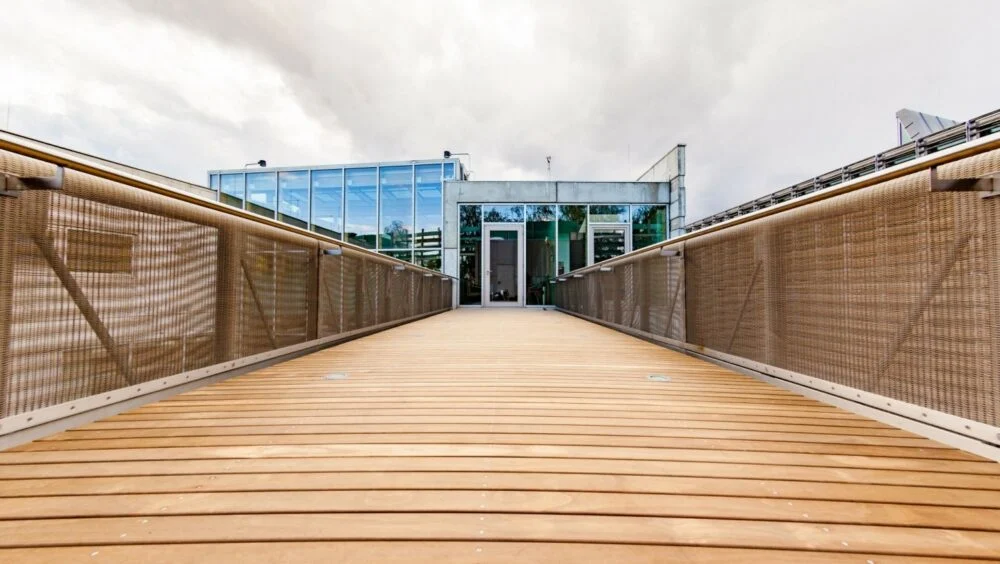
Here’s a simpler version:
This pedestrian bridge in Berlin is a great example of using sustainably sourced wood. When a project needs a lot of materials, it’s important to consider both quality and the environment. The wood for this bridge comes from Kebony, which is a good alternative to tropical hardwoods. Using this wood helps protect endangered trees and gives the bridge a unique look. It’s also strong and can handle different weather, so it will last a long time. This bridge shows that we can build nice and useful structures while taking care of the planet. By choosing sustainable materials, we create designs that are good for everyone. It’s a great example for future projects, showing that quality and sustainability can go hand in hand in modern design.
